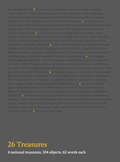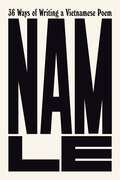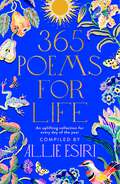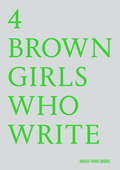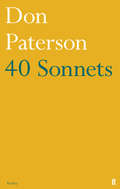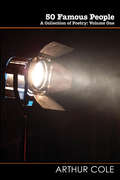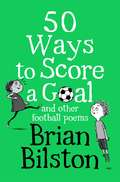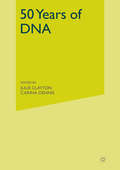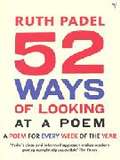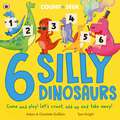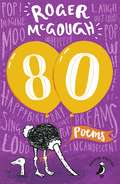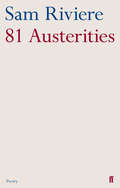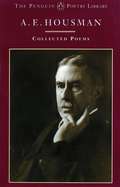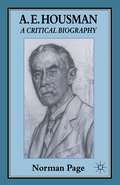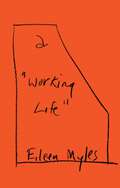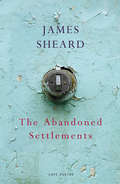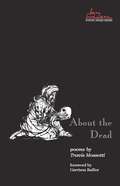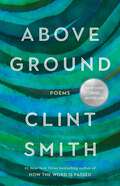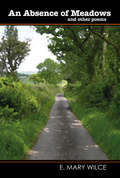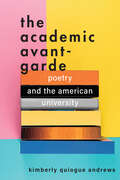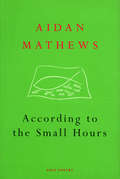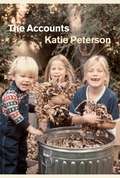- Table View
- List View
26 Treasures: 4 National Museums, 104 Objects, 62 Words Each
by John SimmonsImagine you're in a museum. You might spot a gargantuan four-poster bed that was a 16th century pub tourist attraction or a threadbare sackcloth robe worn in church by a 17th century adulteress. Yet despite their rarity, we often fail to engage with these extraordinary objects. We simply nod and move on. But it doesn't have to be that way. Through its 26 Treasures project, writers' collective 26 is exploring how to create emotional connections between objects and individuals. In 2010, London's Victoria & Albert museum chose 26 objects from its British Galleries and randomly assigned them to 26 writers. Each person wrote exactly 62 words – 26 in reflection – in response to the object. The results were beautiful, surprising, lyrical, sometimes comical. Andrew Motion wrote about a bust of Homer, a 17th century Chinese porcelain figure reminded a writer of a pub landlord in Inverness, while the wedding suit of James 11 inspired 62 words about 'a suit as full of scratches as a rose-garden'. In 2011 they took the idea to the National Library of Wales, the Ulster Museum and the National Museum of Scotland, where writers were let loose on objects as disparate as a mediaeval illuminated book, a beggar's badge and a 16th century Scottish guillotine. It seems that all writers and readers treasure connections with the past through objects – personal ones and those displayed in museums. There are more than a hundred writers involved in this collection, including many of the best-known literary authors in England, Scotland, Wales and Northern Ireland. The result is an exquisite illustrated book, where the 104 objects and their accompanying sestudes appear side-by-side.
36 Ways of Writing a Vietnamese Poem
by Nam LeAn explosive, devastating debut poetry book from the winner of the Dylan Thomas Prize 36 Ways of Writing a Vietnamese Poem is an urgent, unsettling reckoning with identity – and the violence of identity. For Le, a Vietnamese refugee in the West, this means the assumed violence of racism, oppression and historical trauma. But it also means the violence of that assumption. Of being always assumed to be outside one’s home, country, culture or language. And the complex violence – for the diasporic writer who wants to address any of this – of language itself. Making use of multiple tones, moods, masks and camouflages, Le’s poetic debut moves with unpredictable and destabilizing energy between the personal and political. As self-indicting as it is scathing, hilarious as it is desperately moving, this is a singular, breakthrough book.
365 Poems for Life: An Uplifting Collection for Every Day of the Year
by Allie EsiriDiscover 365 Poems for Life, an uplifting poem-a-day collection from award-winning curator Allie Esiri.This nourishing poem-a-day collection offers readers a brief moment of escape from daily life through some of the warmest words in the English language. Whether you’re searching for wisdom or looking to boost your wellbeing, dip into this anthology to share with others or enjoy a quiet moment of calm every day of the year.Explore a wide range of poets, including Maya Angelou, Carol Ann Duffy, Kae Tempest, Dylan Thomas, Ocean Vuong and many more. The perfect gift for poetry lovers and newbies alike, this beautiful anthology brings a moment of solace every day of the year.
4 BROWN GIRLS WHO WRITE
by 4 BROWN GIRLS WHO WRITE Roshni Goyate Sharan Hunjan Sheena PatelRoshni Goyate, Sharan Hunjan, Sheena Patel and Sunnah Khan are four writers that make up the talented collective 4 BROWN GIRLS WHO WRITE and bring their radical, polyphonic performance style to bear on a series of individual pamphlets that still resonate with their collaborative force. Each author’s discreet publication is a stand-alone work, published as a set of poetry and prose pamphlets, highlighting the daring, brilliant writing that characterises both the group and each individual author.
40 Sonnets
by Don PatersonThis new collection from Don Paterson, his first since the Forward prize-winning Rain in 2009, is a series of forty sonnets. Some take a more traditional form, some are highly experimental, but what these poems share is a lyrical intelligence and musical gift that has been visible in his work since his first book of poems, Nil Nil, in 2009. Addressed to children, friends and enemies, the living and the dead, musicians, poets and dogs, these poems display an ambition in their scope and tonal range matched by the breadth of their concerns. Here, voices call home from the blackout and the airlock, the storm cave and the séance, the coalshed, the war, the ringroad, the forest and the sea. These are voices frustrated by distance, by shot glass and bar rail, by the dark, leaving the 'sound that fades up from the hiss, / like a glass some random downdraught had set ringing, / now full of its only note, its lonely call . . .'In 40 Poems Paterson returns to some of his central themes - contradiction and strangeness, tension and transformation, the dream world, and the divided self - in some of the most powerful and formally assured poems he has written to date. This is a rich and accomplished new work from one of the foremost poets writing in English today.
50 Famous People: A Collection of Poetry - Vol. 1 (Wordcatcher Modern Poetry)
by Arthur ColeI was at a loss with regard to my next poetry project. As a result I asked the members of my Facebook page ‘Arthur’s Poems and Anecdotes’ what they would like as the next book. There were many suggestions, and after deliberation I decided on the title ‘50 Famous People'. I carried out a poll amongst the members as to who they would like to be included. The individuals could be from any walk of life, and period in history. I was surprised by the eclectic mix of names put forward. After the poll closed, I was left with the task of selecting the 50 to be included in the book and they include politicians, sportsmen, writers, poets, war heroes, and infamous individuals. I took great pleasure in writing the poems, and in the process I learned much. I would like to thank and dedicate the book to all members of the group, for their support throughout the project.
50 Ways to Score a Goal and Other Football Poems
by Brian Bilston'Bilston is a magician with words' Guardian'Someone who knows their way round both a joke and a bittersweet narrative.' The TimesA brilliant collection of funny, witty football poems by Brian Bilston.50 Ways to Score a Goal and Other Football Poems shows Brian Bilston's genuine love for the beautiful game, whether it is a kick about in the back garden, a Sunday match in the park or watching your team winning the cup. There are poems about everything from training to match day, after match analysis, honest football chants and half-time satsumas. Includes chants, ballads, puns, acrostics and shape poems. This is a must for football fans of all ages.
50 Years of DNA
by J. Clayton C. DennisCrick and Watson's discovery of the structure of DNA fifty years ago marked one of the great turning points in the history of science. Biology, immunology, medicine and genetics have all been radically transformed in the succeeding half-century, and the double helix has become an icon of our times. This fascinating exploration of a scientific phenomenon provides a lucid and engaging account of the background and context for the discovery, its significance and afterlife, while a series of essays by leading scientists, historians and commentators offers uniquely individual perspectives on DNA and its impact on modern science and society.
52 Ways Of Looking At A Poem: A Poem For Every Week Of The Year (PDF)
by Ruth PadelEver wondered about how to really interpret poetry? Puzzled about metre, rhyming and stanzas? Presented in language thoroughly accessible for all, poet and writer Ruth Padel demystifies poetic style, structure and meaning in this comprehensive anthology of modern poems Based on the author's popular column in The Independent on Sunday, each poem is accompanied by an informative and entertaining explanatory excerpt by Padel. Featuring an assortment of contemporary poets from Carol Ann Duffy to Seamus Heaney, the collection thematically encompasses universal subjects of love, sex, family, death, as well as more obscure matters - for instance, loneliness when listening to the shipping forecast. A poem for each week of the year, Padel's exploration of the literary form expertly combines technical analysis with imaginative, creative interpretation - sure to make any reader fall in love with the modern verse.
6 Silly Dinosaurs: a counting and number bonds picture book
by Adam Guillain Charlotte GuillainIt's time for count and seek - would you like to come and play?Let's count up all the dinosaurs and see who's here today!Count and spot the silly dinosaurs in this madcap, rhyming picture book. From T. rex magicians to dancing Diplodocus, this hilarious picture book encourages children to learn basic sums through play and interactivity.As well as basic counting and sums, this book introduces children to numbers bond and fact friends for the number 6.With playful characters to spot and bouncy rhyming text, this engaging picture book is perfect for sharing with a child to support their learning in a fun way.
80: Poems by Roger McGough
by Roger McGoughThere are eighty of Roger McGough's favourite poems in this hugely enjoyable collection, gathered together into a new volume to celebrate Roger's 80th birthday! Sometimes funny, sometimes sad, but always inventive, the enormous variety of poems from this hugely popular poet will never cease to amaze and delight children of all ages.
81 Austerities
by Sam RiviereAll three-dimensional objects can be experienced in two dimensions: it just takes some careful unpicking of the seams. Witty, comic, plaintive, touching, acerbic, droll, cavalier, caffeinated, irreverent, stringent: Austerities, the mind-altering substantial debut from Sam Riviere, seems to achieve the impossible in being all things at once. Initially conceived as a response to the 'austerity measures' implemented by the coalition government in 2011, the poems quickly began taking on a life in kind: 'cutting' themselves on levels of sentiment, structure and even subject matter. Not content to merely build a series of freethinking poems, these remarkable pieces seem eagerly and mischievously to analyze their moment of creation, then weigh their worth, then consign their excess to the recycling bin thereafter. Experience is speedy, the poems seem to say, so dizzyingly fast that the poetry will inevitably be running to catch up - often arriving at a scene the moment after the moment has gone. The effect is as funny and it is startling, beguiling as it is surprising, and makes Austerities a vivid reminder that deprivation, as Leonard Cohen put it, can be the mother of poetry.
A.E. Housman: Collected Poems (Penguin Poetry Library)
by A. E. HousmanA. E. Housman, being one of the most famous and widely read poets of the early twentieth century, is certainly worthy of praise. His 'Collected Poems' are therefore a valuable read because they allow readers to gain an impression of the author's mind, opinions and lifestyle. Furthermore, they simultaneously depict a man who was deeply pessimistic and obsessed with death, and, on the other hand, illustrate a man who was also very much concerned with love, youth, life and the fleetingness of the these concepts.It is easy to understand why Housman's sensitive and sympathetic depictions of heroic English soldiers influenced and affected his readers, as his poetry is often written in an uncomplicated, yet sensitive style, which allows readers to feel as if they are witnessing events almost as the poet writes them down. These poems are also intriguing to read if you are a Shakespeare fan, as it is possible to spot many Shakespeare references in Housman's writing. A glossary or footnotes at the back of this book would be appreciated in any further editions, in order to allow readers to gain more understanding of the other poets and authors that Housman was influenced by. In brief, this collection presents the literary highlights of Housman's career, and this will be most appreciated by readers new to Housman's poetry.
A. E. Housman: A Critical Biography
by Norman PageA.E. Housman (1859-1936) was a poet of enormous popularity and widespread influence: a Latin scholar of the front rank, a superb prose stylist, a notable writer of comic verse and, thanks to the enormous success of A Shropshire Lad, one of the greatest and best-known poems in the English language, he became a legend in his own lifetime. Reissued to mark the centenary of the publication of A Shropshire Lad, Norman Page's highly-acclaimed biography is regarded as the most complete account of Housman's life and career available. Drawing on a wide range of sources, including much unpublished material, Norman Page provides us with a fascinating insight into Housman the poet, the scholar and the man. `By far the best biography of Housman we have ...' - Andrew Motion, Times Literary Supplement
a "Working Life"
by Eileen MylesThe first new poetry collection since Evolution from the peerless writer, activist and poet Eileen Myles, a "Working Life" captures the many dualities of human life: loneliness and companionship, city and country, youth and aging, travel and stasis, fear and wonder.a "Working Life" is a book rooted in the beauty of the everyday: the 'sweet accumulation' of birds outside a window, a cup of coffee and a slice of pizza, a lover's foot on the bed. These poems travel widely in planes, trains and cars around the world and by foot across the terrain of the small rooms that held us during the pandemic lockdowns. In this collection Myles shows both the beauty and ridiculousness of love and sex, articulates the immense anxieties about the future world threatened by climate change and capitalism, and also finds transcendent wonder in the landscapes and animals around us, and in the radical human act of caring for one another and our world.With humour, beauty and singular vision, a "Working Life" shows Eileen Myles working at the height of their poetic and philosophical powers.
The Abandoned Settlements
by James SheardShortlisted for the 2017 T. S. Eliot PrizePBS Autumn RecommendationThe poems in James Sheard’s remarkable third book are about love and leaving, of how the rift of departure brings on a kind of haunting – of the people involved and the places where they lived – an emotional trace of departed lives and loves. This is what these poems are: the scars of separation, the spoors of desire. Sheard writes powerfully about loss, about how the vestiges of significance, of sensual heat, are retained by structures – in ghost towns, war-zones, deserted villages or resorts – but also by the human body and memory: ‘for love exists, and then is ruined, and then persists.’These are poems about permanence and fragility, of being uncertain whether the house you live in is a shell, or if you have become a shell by living there – whether emptiness means loss and abandonment or a clean start and a new beginning. But these are also poems full of the ache of desire, the tart, lingering smell of sex: poems shaped by longing.James Sheard is one of Britain’s most assured and precise lyric poets, and his third collection brings all his considerable strengths to poems as accurate and strange as thermal images.
About the Dead (Swenson Poetry Award #15)
by Travis MossottiTravis Mossotti writes with humor, gravity, and humility about subjects grounded in a world of grit, where the quiet mortality of working folk is weighed. To Mossotti, the love of a bricklayer for his wife is as complex and simple as life itself: “ask him to put into words what that sinking is, / that shudder in his chest, as he notices / the wrinkles gathering at the corners of her mouth.” But not a whiff of sentiment enters these poems, for Mossotti has little patience for ideas of the noble or for sympathetic portraits of hard-used saints. His vision is clear, as clear as the memory of how scarecrows in the rearview, “each of them, stuffed / into a body they didn’t choose, resembled / your own plight.” His poetry embraces unsanctimonious life with all its wonder, its levity, and clumsiness. About the Dead is an accomplished collection by a writer in control of a wide range of experience, and it speaks to the heart of any reader willing to catch his “drift, and ride it like the billowed / end of some cockamamie parachute all the way / back to the soft, dysfunctional, waiting earth.”
Above Ground
by Clint SmithA remarkable poetry collection with "inextinguishable generosity and abundant wisdom" (Monica Youn) from Clint Smith, the #1 New York Times bestselling and National Book Critics Circle award-winning author of How the Word Is Passed. Clint Smith&’s vibrant and compelling new collection traverses the vast emotional terrain of fatherhood, and explores how becoming a parent has recalibrated his sense of the world. There are poems that interrogate the ways our lives are shaped by both personal lineages and historical institutions. There are poems that revel in the wonder of discovering the world anew through the eyes of your children, as they discover it for the first time. There are poems that meditate on what it means to raise a family in a world filled with constant social and political tumult. Above Ground wrestles with how we hold wonder and despair in the same hands, how we carry intimate moments of joy and a collective sense of mourning in the same body. Smith&’s lyrical, narrative poems bring the reader on a journey not only through the early years of his children&’s lives, but through the changing world in which they are growing up—through the changing world of which we are all a part.Above Ground is a breathtaking collection that follows Smith's first award-winning book of poetry, Counting Descent.
An Absence of Meadows and Other Poems (Wordcatcher Modern Poetry)
by E. Mary WilceThe poems in this volume reveal how much of our lives are rooted in feeling as well as in fact, in imagination as well as action. The poems dwell on things remembered or seen. The focus on the subject is clear and lucidly expressed, the poet teasing out its resonances while holding emotion on a tight rein. Their principal subject is childhood, lovingly described but somehow also threatened (as in The Fox on the Stairs and Lessons in the Wind, two striking poems).
absolute animal
by Rachel DeWoskinPoems that traverse and question the lines between human and animal behavior. Experimenting with time, language, and transgressing boundaries, the poems in absolute animal lean into Nabokov’s notion that precision belongs to poetry and intuition to science. Rachel DeWoskin’s new collection navigates the chaos of societal and mortal uncertainty. Through formal poetry, DeWoskin finds sense amid disorder and unearths connections between the animal and the human, between the ancient and the contemporary, and between languages, incorporating translations from poems dating as far back as the Tang dynasty. From sonnet sequences about heart surgeries to examinations of vole romance and climate change, absolute animal investigates and moves across boundaries and invites us to consider what holds life, what lasts, what dies, and what defines and enriches the experience of being human.
The Academic Avant-Garde: Poetry and the American University
by Kimberly Quiogue AndrewsThe surprising story of the relationship between experimental poetry and literary studies.In The Academic Avant-Garde, Kimberly Quiogue Andrews makes a provocative case for the radical poetic possibilities of the work of literary scholarship and lays out a foundational theory of literary production in the context of the university. In her examination of the cross-pollination between the analytic humanities and the craft of poetry writing, Andrews tells a bold story about some of today's most innovative literary works. This pathbreaking intervention into contemporary American literature and higher education demonstrates that experimental poetry not only reflects nuanced concern about creative writing as a discipline but also uses the critical techniques of scholarship as a cornerstone of poetic practice. Structured around the concepts of academic labor (such as teaching) and methodological work (such as theorizing), the book traces these practices in the works of authors ranging from Claudia Rankine to John Ashbery, providing fresh readings of some of our era's most celebrated and difficult poets.
The Academic Avant-Garde: Poetry and the American University
by Kimberly Quiogue AndrewsThe surprising story of the relationship between experimental poetry and literary studies.In The Academic Avant-Garde, Kimberly Quiogue Andrews makes a provocative case for the radical poetic possibilities of the work of literary scholarship and lays out a foundational theory of literary production in the context of the university. In her examination of the cross-pollination between the analytic humanities and the craft of poetry writing, Andrews tells a bold story about some of today's most innovative literary works. This pathbreaking intervention into contemporary American literature and higher education demonstrates that experimental poetry not only reflects nuanced concern about creative writing as a discipline but also uses the critical techniques of scholarship as a cornerstone of poetic practice. Structured around the concepts of academic labor (such as teaching) and methodological work (such as theorizing), the book traces these practices in the works of authors ranging from Claudia Rankine to John Ashbery, providing fresh readings of some of our era's most celebrated and difficult poets.
According to the Small Hours (Cape Poetry Ser.)
by Aidan MathewsIn this, his first collection of poems in fifteen years, Aidan Mathews brings together the sacred and the profane, playful and profound, the iconic and the everyday - illuminating the variousness and commonality of human experience. These poems wear their erudition lightly: dazzling us with their fresh observations, the strangely intimate details ('mice among the breadcrumbs of the Last Supper') and a fluid, metaphysical wit that can link a saint's matyrdom to a Sunday roast. Mercurial, passionate and always surprising, According to the Small Hours is a triumphant return to the form.
The Accounts (Phoenix Poets)
by Katie PetersonThe death of a mother alters forever a family’s story of itself. Indeed, it taxes the ability of a family to tell that story at all. The Accounts narrates the struggle to speak with any clear understanding in the wake of that loss. The title poem attempts three explanations of the departure of a life from the earth—a physical account, a psychological account, and a spiritual account. It is embedded in a long narrative sequence that tries to state plainly the facts of the last days of the mother’s life, in a room that formerly housed a television, next to a California backyard. The visual focus of that sequence, a robin’s nest, poised above the family home, sings in a kind of lament, giving its own version of ways we can see the transformation of the dying into the dead. In other poems, called “Arguments,” two voices exchange uncertain truths about subjects as high as heaven and as low as crime. Grief is a problem that cannot be solved by thinking, but that doesn’t stop the mind, which relentlessly carries on, trying in vain to settle its accounts. The death of a well-loved person creates a debt that can never be repaid. It reminds the living of our own psychological debts to each other, and to the dead. In this sense, the death of this particular mother and the transformation of this particular family are evocative of a greater struggle against any changing reality, and the loss of all beautiful and passing forms of order.
The Accounts (Phoenix Poets)
by Katie PetersonThe death of a mother alters forever a family’s story of itself. Indeed, it taxes the ability of a family to tell that story at all. The Accounts narrates the struggle to speak with any clear understanding in the wake of that loss. The title poem attempts three explanations of the departure of a life from the earth—a physical account, a psychological account, and a spiritual account. It is embedded in a long narrative sequence that tries to state plainly the facts of the last days of the mother’s life, in a room that formerly housed a television, next to a California backyard. The visual focus of that sequence, a robin’s nest, poised above the family home, sings in a kind of lament, giving its own version of ways we can see the transformation of the dying into the dead. In other poems, called “Arguments,” two voices exchange uncertain truths about subjects as high as heaven and as low as crime. Grief is a problem that cannot be solved by thinking, but that doesn’t stop the mind, which relentlessly carries on, trying in vain to settle its accounts. The death of a well-loved person creates a debt that can never be repaid. It reminds the living of our own psychological debts to each other, and to the dead. In this sense, the death of this particular mother and the transformation of this particular family are evocative of a greater struggle against any changing reality, and the loss of all beautiful and passing forms of order.
